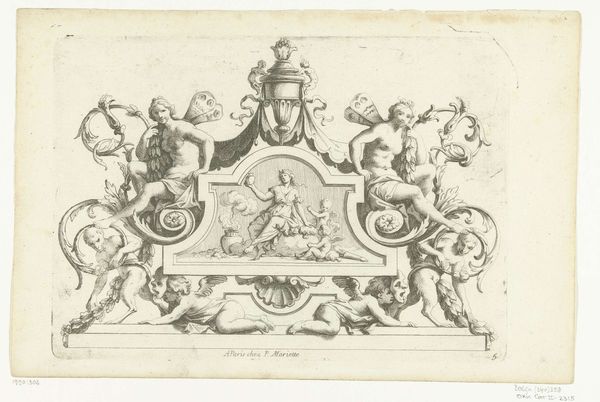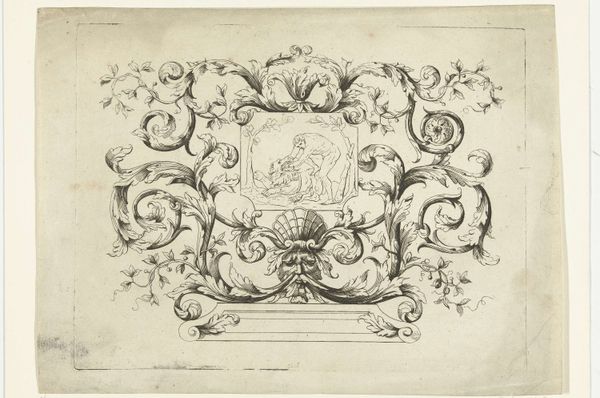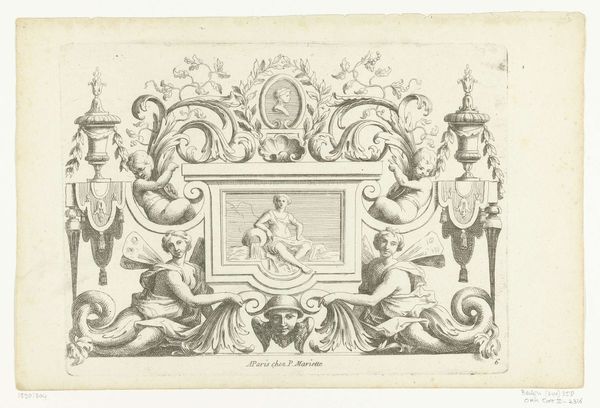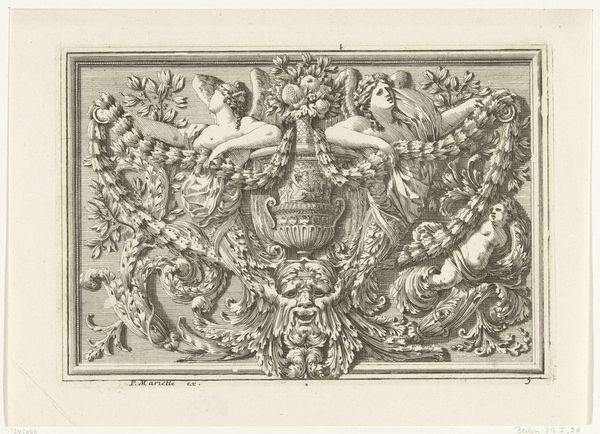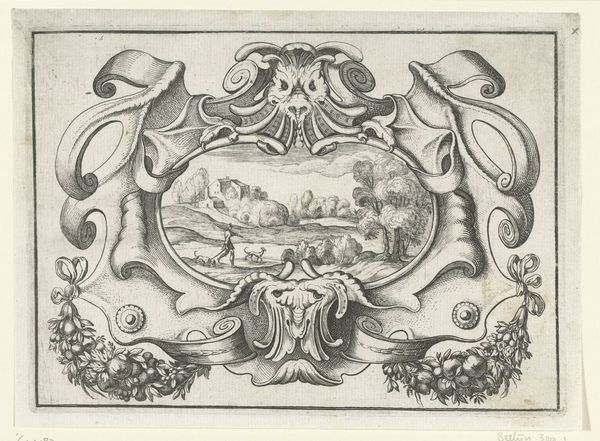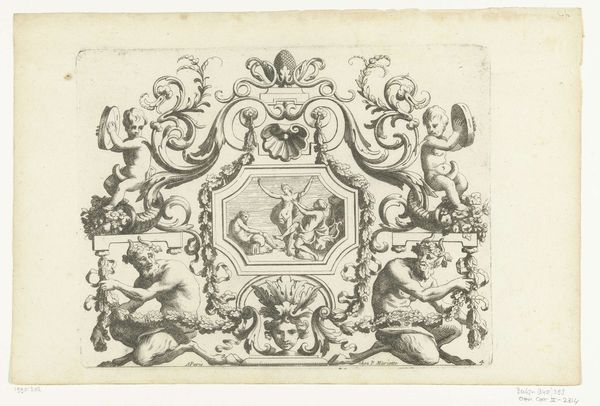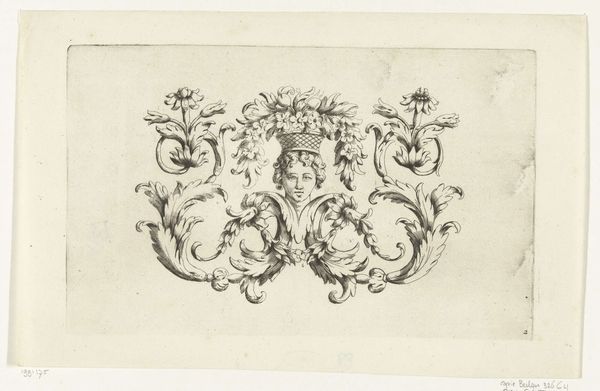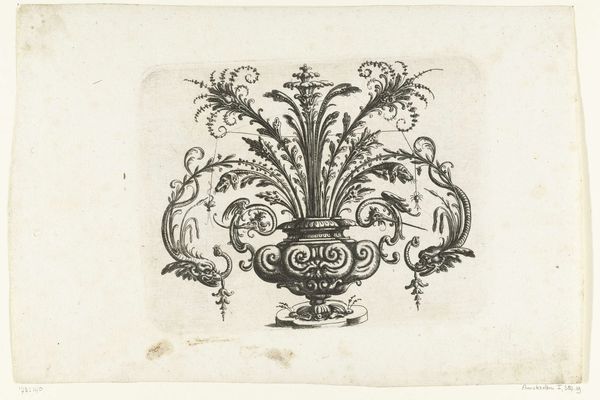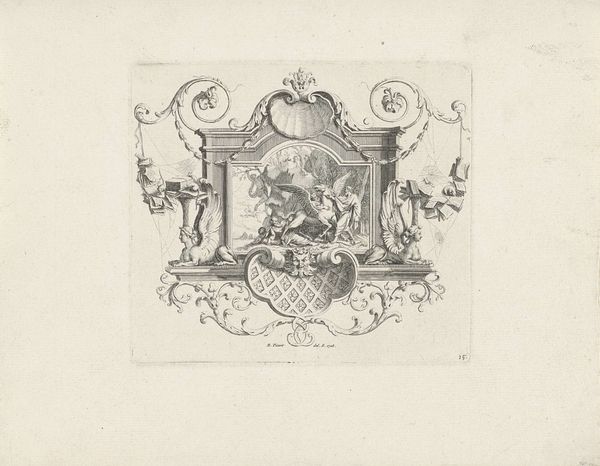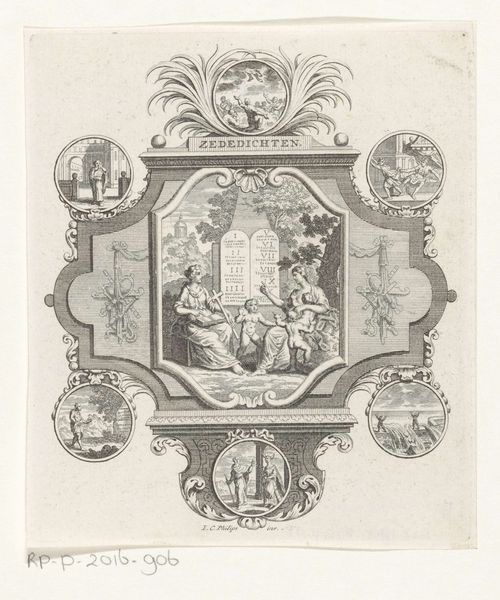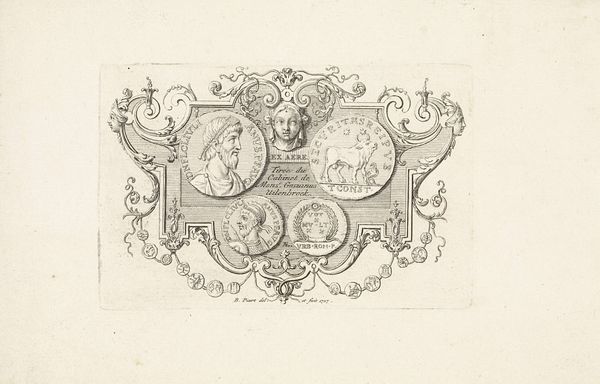
print, engraving
#
baroque
#
pen drawing
# print
#
old engraving style
#
figuration
#
ink drawing experimentation
#
history-painting
#
decorative-art
#
engraving
Dimensions: height 160 mm, width 202 mm
Copyright: Rijks Museum: Open Domain
Curator: Here we have "Paneel met Venus en Cupido," a decorative panel etched around 1670-1680 by Alexis Loir, now residing here at the Rijksmuseum. The artist employed engraving techniques to render this piece. What are your initial thoughts? Editor: A riot of swirling lines! The overall effect, especially with the figures, is undeniably decorative and indicative of the baroque era. It is a bit much if I am being honest. Curator: Loir's manipulation of the etching medium itself is fascinating. The dense cross-hatching creates an interesting illusion of depth. Consider also how these printing techniques made such designs accessible for wider consumption, influencing artisans. Editor: I see that. If we examine how line, form, and composition operate within its internal structure, we can detect a specific mode of formal expression emblematic of the Baroque period. The cherubs above, balanced on a pediment, create a verticality offset by horizontally posed reclining figures along the base, thus enacting some visual harmony overall. Curator: Indeed, and consider the material context of these engravings. This wasn’t merely an artistic endeavor but a contribution to the larger sphere of craft production. These images circulated amongst cabinet makers and other decorative artists of the era, so informing popular aesthetic tastes across social classes. Editor: From my perspective, those social aspects are external. More interesting to me are the ways it communicates through allegorical references using well-established classical elements. Venus and Cupid signal love, beauty, harmony; these aren’t simply design elements—they convey codified meanings. Curator: Yet, doesn’t understanding the practical utility of Loir's print in design workshops enrich our viewing experience, and prompt more informed social commentary overall? Editor: To some degree, context helps... But the immediate sensory impression, the calculated balance—that is central. Still, reflecting upon these ornate flourishes as templates for craftsmen offers valuable insight into material culture. Curator: Precisely, it invites inquiry into artistic production as social production! A balance, perhaps, is best struck acknowledging the formal qualities alongside material considerations... Editor: Perhaps we've uncovered the essence of symbiosis: where line meets labor. Thank you for your insights into "Paneel met Venus en Cupido," I was ready to discard it, but now can clearly see there is something in the process as well as the construction of its design.
Comments
No comments
Be the first to comment and join the conversation on the ultimate creative platform.
